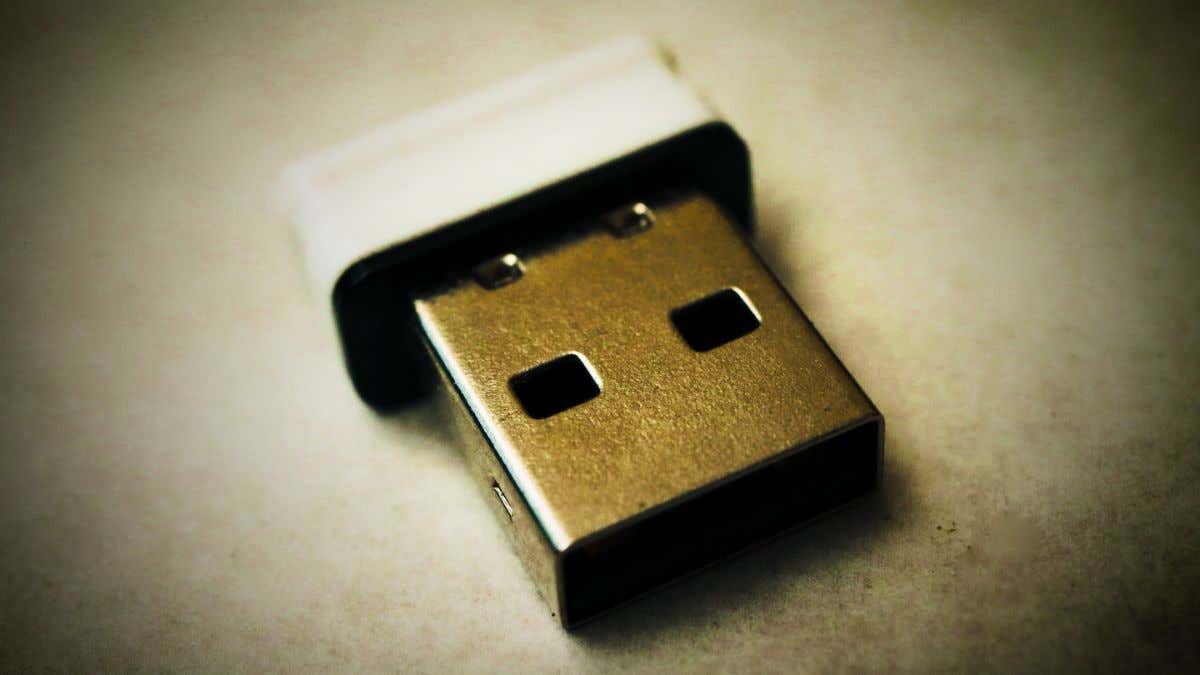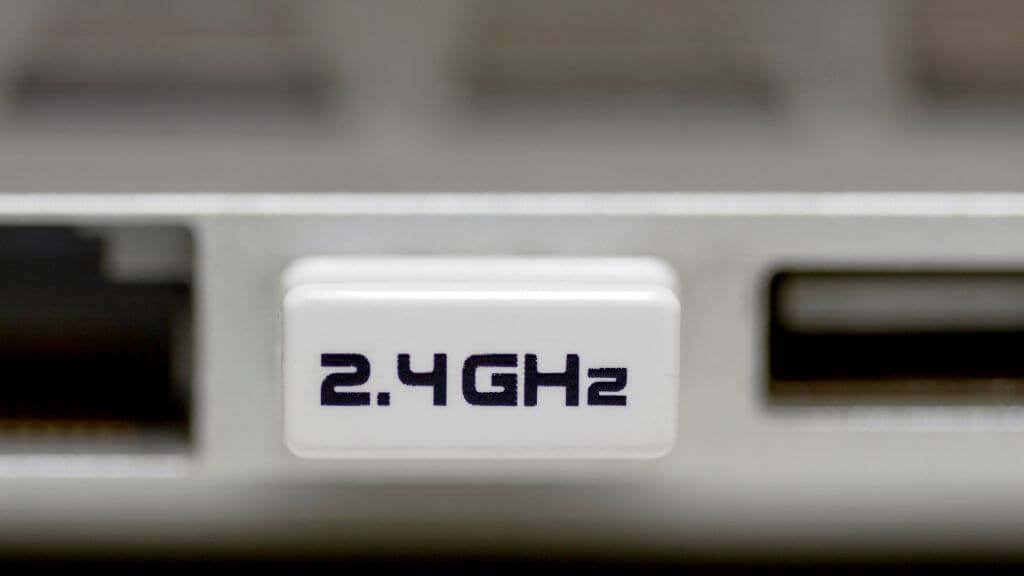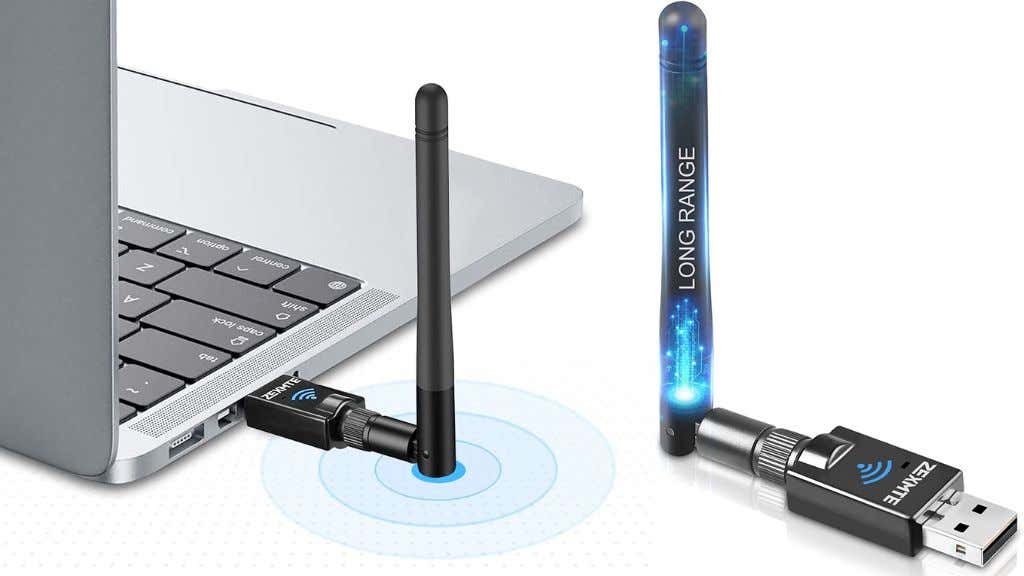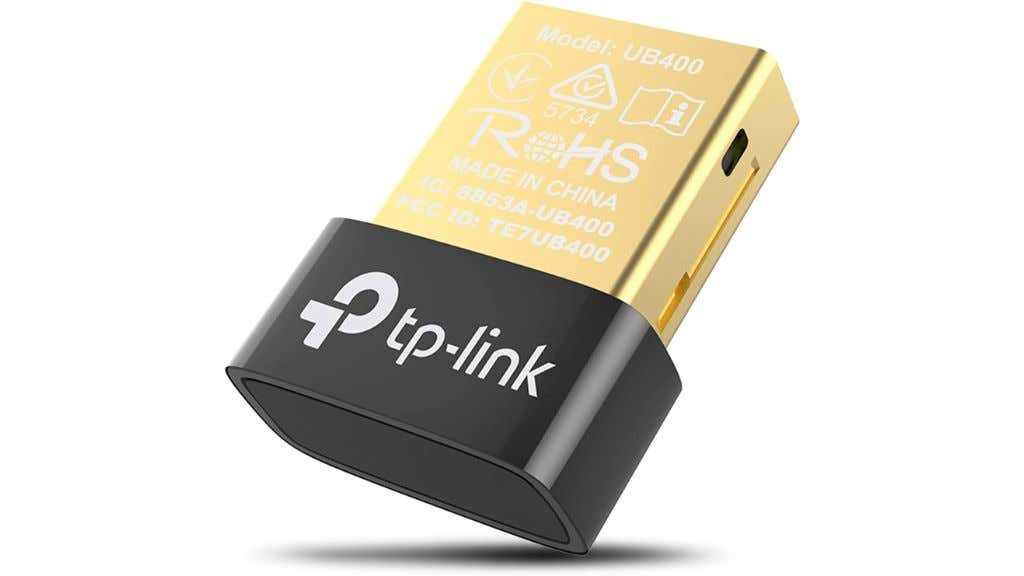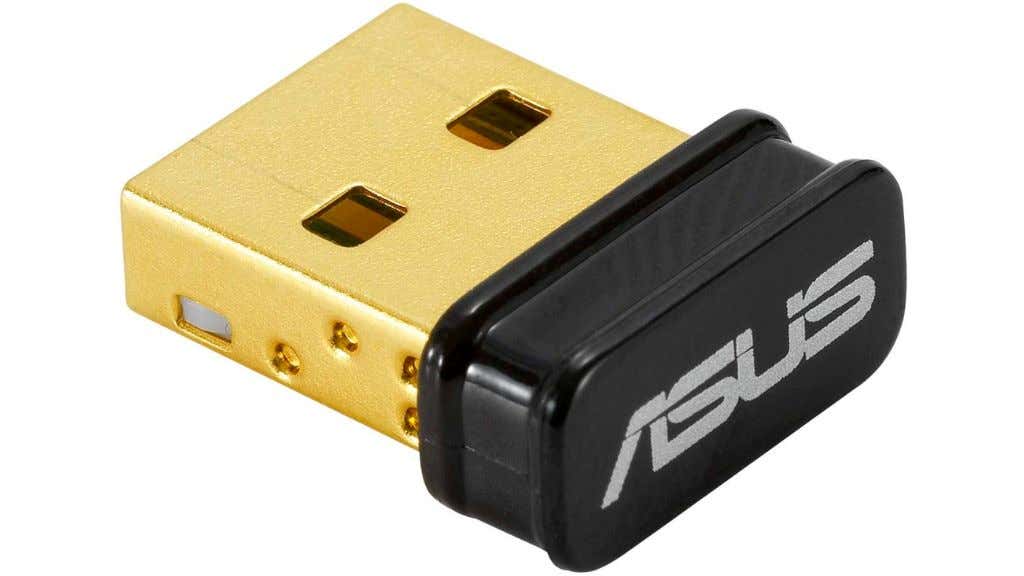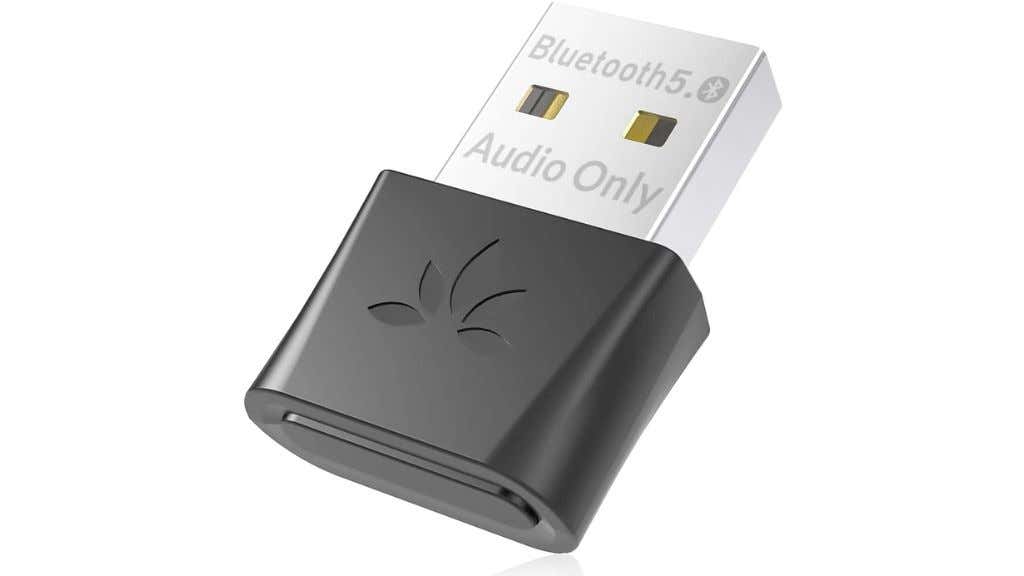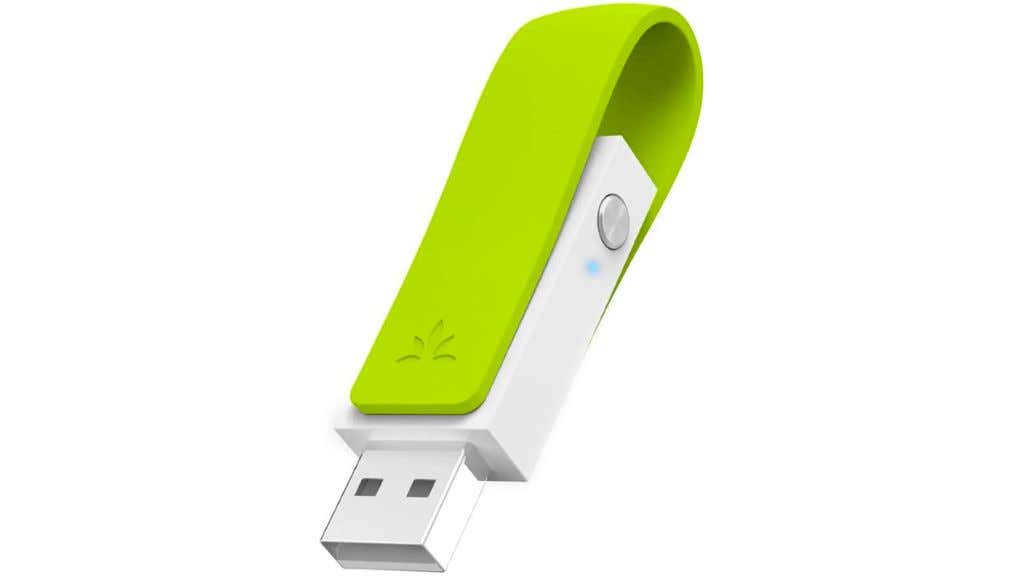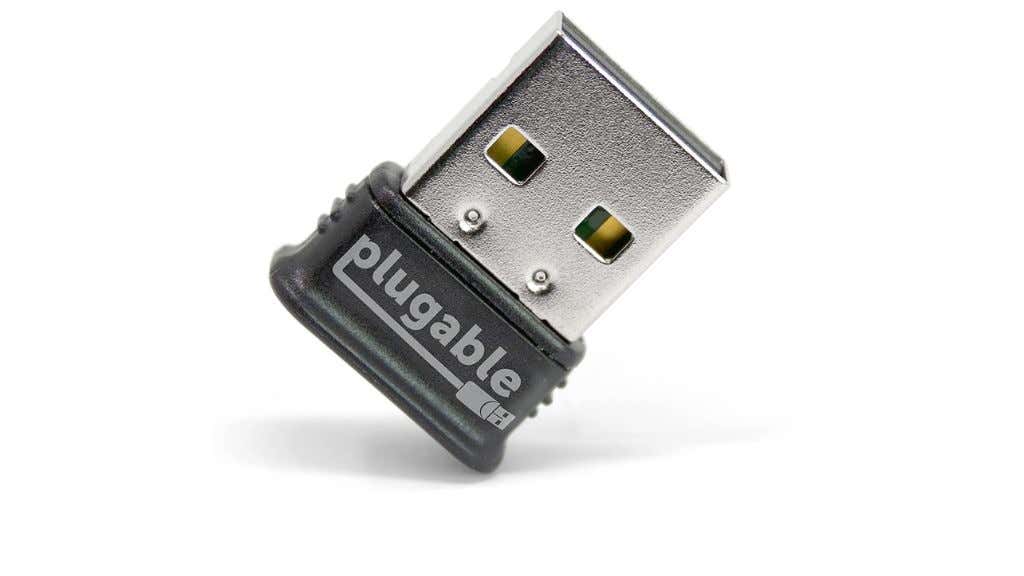We almost take it for granted that every computer comes with Bluetooth technology. After all, every laptop, smartphone, game console, and even some coffee makers have Bluetooth!
Yet, if you have a desktop computer, the odds are it doesn’t have Bluetooth out of the box. You’ll have to add it using a PCIe add-in card or, much more conveniently, a USB Bluetooth adapter or “dongle.”
While these are generally inexpensive, it’s easy to buy a dongle that goes in the trash (or returned to Amazon) because it’s not fit for purpose. We’ve rounded up some of the best examples so you can buy the correct dongle the first time.
What to Look For in a Bluetooth Adapter
A USB Bluetooth dongle always has to balance size against range. Micro adapters have a small internal antenna and sit almost flush against the USB port. They are an excellent solution for people who want to use a game controller or wireless Bluetooth headphones at their desks.
If you want to use Bluetooth at longer ranges, you’ll want to consider using a model that has a large antenna. This boosts the signal range and gives you some leeway to adjust the directional strength of the signal.
As for technical specifications, it’s almost always the right move to pick a dongle that supports the latest Bluetooth Standard. At the time of writing, that’s Bluetooth 5.2. Newer versions of Bluetooth increase bandwidth, reduce power consumption, offer less latency, and can handle more devices simultaneously.
Most modern computers have a few USB 2.0 ports, so you don’t have to sacrifice a USB 3 port for your Bluetooth adapter. On top of this, it turns out that USB 3.0 can cause radio interference that specifically causes issues with Bluetooth, so you won’t see many USB 3 dongles. New Bluetooth standards are backward compatible with older standards.
EDR or Enhanced Data Rate is helpful since it allows for higher-quality audio thanks to much better data transfer rates. You’ll also experience less interference and stutter in audio.
We’re focusing on adapters that support Windows here, but many of these products will also work on macOS, Ubuntu Linux, and more. So be sure to double-check compatibility before making a purchase.
1. Best for Long-Range: ZEXMTE Bluetooth Adapter
Pros
- Affordable price
- Up-to-date BT features
- Amazing range
Cons
- Only works with Windows officially
- Requires a long-range Bluetooth receiver device for the best results
It’s easy to mistake the ZEXMTE Bluetooth dongle for a Wi-Fi adapter with its large external antenna. However, this high-gain antenna is crucial for achieving the theoretical maximum range of Bluetooth. Its Bluetooth 5.0+ EDR technology can work as far as 328 feet (100M), which is ten times as far as Bluetooth 4.0.
That makes it perfect for situations where you want to use a wireless speaker that’s far away from your computer. The ZEXMTE isn’t just useful for desktop computer users since it will extend the Bluetooth range of any laptop compared to the typical internal Bluetooth radio.
Unfortunately, since communication goes both ways, your target Bluetooth device must be a “Class 1” device to benefit from this dongle’s extended range. This dongle is only supported in Windows, as far back as Windows 7.
2. Best for Upgrading Older Systems: TP-Link UB400
Pros
- Very inexpensive
- Small, low-profile
- EDR and A2DP functionality
- Windows XP support
Cons
- Bluetooth 4.0
- Windows-only
The UB400 is an inexpensive Bluetooth wireless adapter, offering an older level of technology. This is only a Bluetooth 4.0 dongle using USB 2.0 connectivity, but it provides A2DP high-quality audio streaming and EDR. As long as the 65-foot (20M) range is good enough for you, it’s a fantastic nano-receiver.
Best of all, it has drivers for Windows versions as far back as Windows XP. So if you have an older system that you want to re-use as a jukebox or you want to add wireless peripherals, the UB400 is a bargain. Just bear in mind that it’s only compatible with Windows.
3. ASUS BT500
Pros
- Bluetooth 5.0 Features in a nano package
- ASUS is a trusted brand with excellent driver support
Cons
- Slightly more expensive than the competition
The BT500 packs Bluetooth 5.0 technology into a nano form factor at a very reasonable price. So you get all the bandwidth and range benefits of the current generation of Bluetooth and BLE (Bluetooth Low Energy) for communication with battery-powered devices such as console controllers.
It’s a few dollars more expensive than other comparable Bluetooth dongles, but ASUS is one of the most trusted names in computer hardware, so you have some peace of mind that there will be driver updates for some time and that those drivers will be stable.
4. Best for Audio: Avantree DG80
Pros
- Dedicated low-lag Bluetooth audio
- Truly plug-and-play. No drivers are needed
- Perfect for movies, games, or glitch-free audio
Cons
- Costs more than the average dongle
- Can only be used for audio, not keyboards or other Bluetooth gadgets
Bluetooth is widely used for wireless audio, but one major weakness of the technology is latency. You may have noticed that audio lags behind what’s happening on-screen when watching a movie or playing a game.
This is one of the reasons gaming headsets for consoles like Xbox use proprietary wireless standards to offer virtually lagless audio. Unfortunately, this usually means you can only use specific official headsets rather than any Bluetooth headset of your choice. If you’re a PC gamer, things are even worse since Bluetooth is your only choice, and the amount of lag can vary wildly depending on the headset and adapter combination.
That’s where the Avnatree DG80 comes in. This audio-only dongle doesn’t present to the operating system as a Bluetooth adapter. Instead, it’s a USB audio device with an independent Bluetooth system. The DG80 connects to your headset independently and offers a dedicated, low-lag audio connection.
It not only works with PC and Mac but also with gaming consoles that support USB audio devices. While you can’t use this for anything other than audio, it will almost always be the superior audio solution for wireless headsets.
5. Best for Long-range Audio: Avantree Leaf
Pros
- Long-range, low-latency audio that works with anything that supports USB audio devices
Cons
- Only works as an audio adapter, no other Bluetooth connectivity
If you skipped straight to this review, read the above for the DG80 first because just about everything we had to say about that adapter applies to the Leaf, another audio-only dongle from Avantree.
It has the same features and approach to doing Bluetooth audio right, such as AptX support, and is completely plug-and-play. You can use it with many devices for audio, and it does not present as a Bluetooth adapter but as a USB audio interface.
The difference between the Leaf and the DG80 is that the Leaf is a Class 1 device with an extended transmission range. It’s rated up to 60 feet (20M) without dropping quality or latency. This means you can play your Bluetooth speakers anywhere within that range, assuming nothing is blocking the signal, and you can comfortably sit far away from your PC or console while gaming with a headset.
6. Best for Wide Compatibility: Kinivo PC BTD-400
Pros
- Widely compatible and reliable.
Cons
- Only Bluetooth version 4.0.
The Kinivo BTD-400 is one of the most popular Bluetooth dongles on Amazon, with nearly 11 000 reviews and an average rating of 4.5 stars. It’s not hard to see why either. It may only be a Bluetooth 4.0 device, but its strength lies in its broad compatibility.
Not only will the BTD-400 work with Windows versions back to Windows XP, but you can also use it with Linux, Raspberry Pi, and macOS systems. The BTD-400 is based on the venerable and widely supported Broadcom chipset.
If you absolutely must have Bluetooth 5.0+, then the BTD-500 is only a little more expensive but just as compatible.
7. Best for Windows 7 Systems: Plugable Bluetooth 4.0 Adapter
Pros
- Supports a robust number of Bluetooth Profiles
- Supports Windows 7 and Vista
- Exceptionally reliable according to customers
Cons
- Only Bluetooth version 4.0
- No BLE support on Vista or Windows 7
We take Bluetooth support in operating systems like Windows 10 for granted these days, but it hasn’t been a standard for all that long. Windows Vista and 7, which is now out of official support, don’t have the robust Bluetooth support of newer versions of Windows.
Using the driver provided by Plugable, this dongle adds support for all of the classic Bluetooth Profiles to Vista and Windows 7. However, there is no support for Bluetooth Low Energy, which is restricted to Windows 8 and up.


